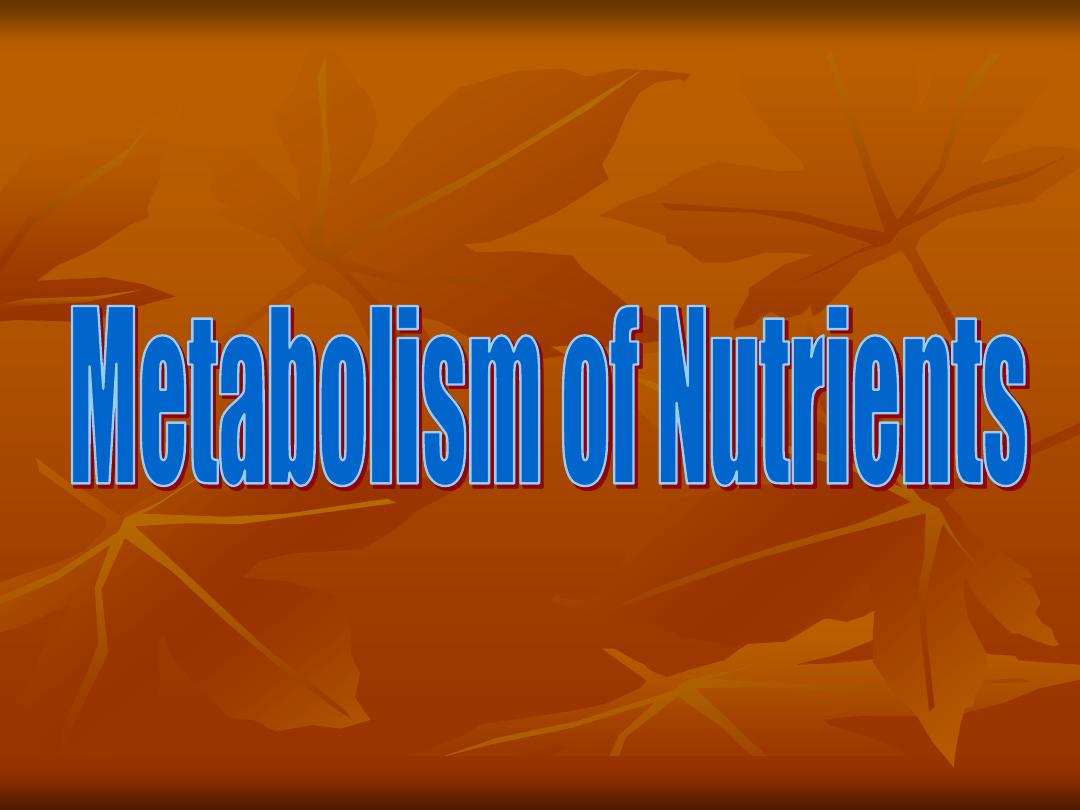
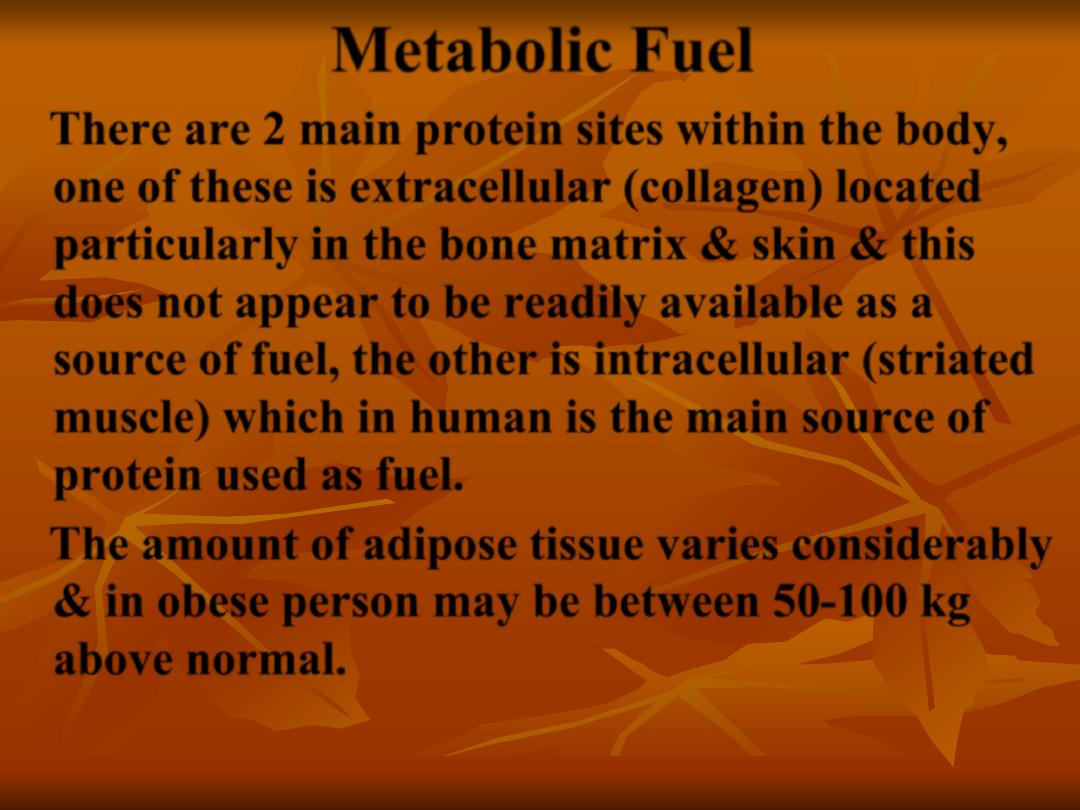
Metabolic Fuel
There are 2 main protein sites within the body,
one of these is extracellular (collagen) located
particularly in the bone matrix & skin & this
does not appear to be readily available as a
source of fuel, the other is intracellular (striated
muscle) which in human is the main source of
protein used as fuel.
The amount of adipose tissue varies considerably
& in obese person may be between 50-100 kg
above normal.
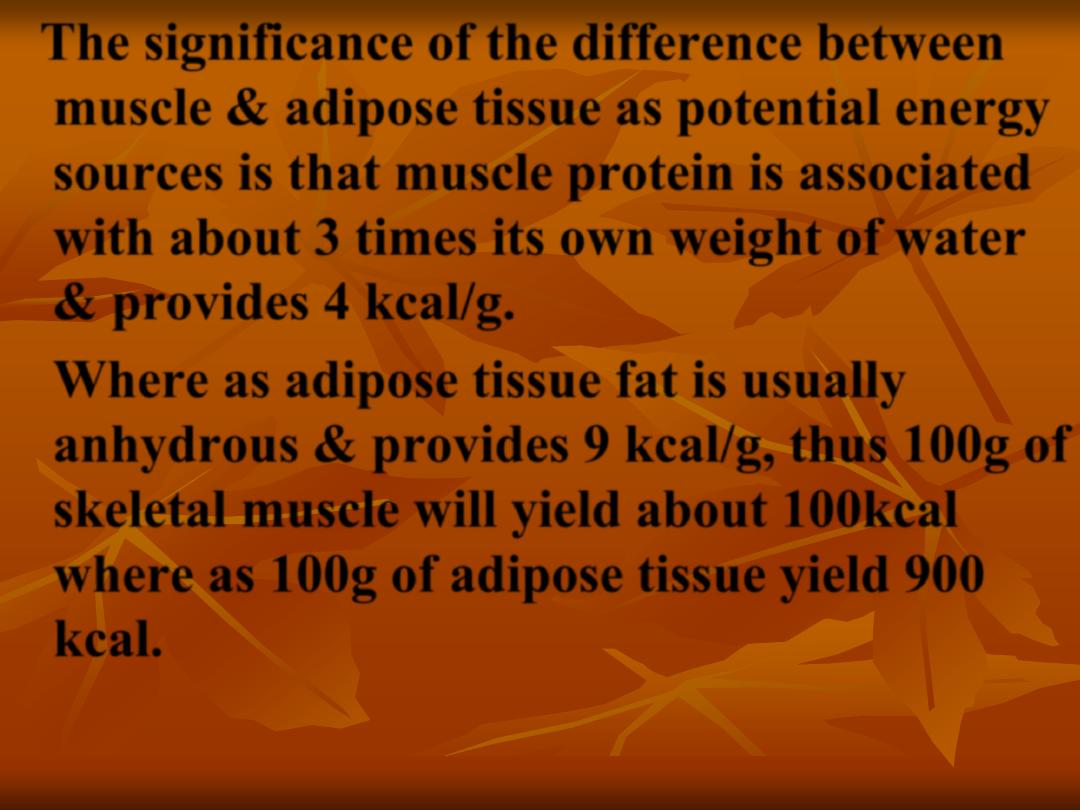
The significance of the difference between
muscle & adipose tissue as potential energy
sources is that muscle protein is associated
with about 3 times its own weight of water
& provides 4 kcal/g.
Where as adipose tissue fat is usually
anhydrous & provides 9 kcal/g, thus 100g of
skeletal muscle will yield about 100kcal
where as 100g of adipose tissue yield 900
kcal.
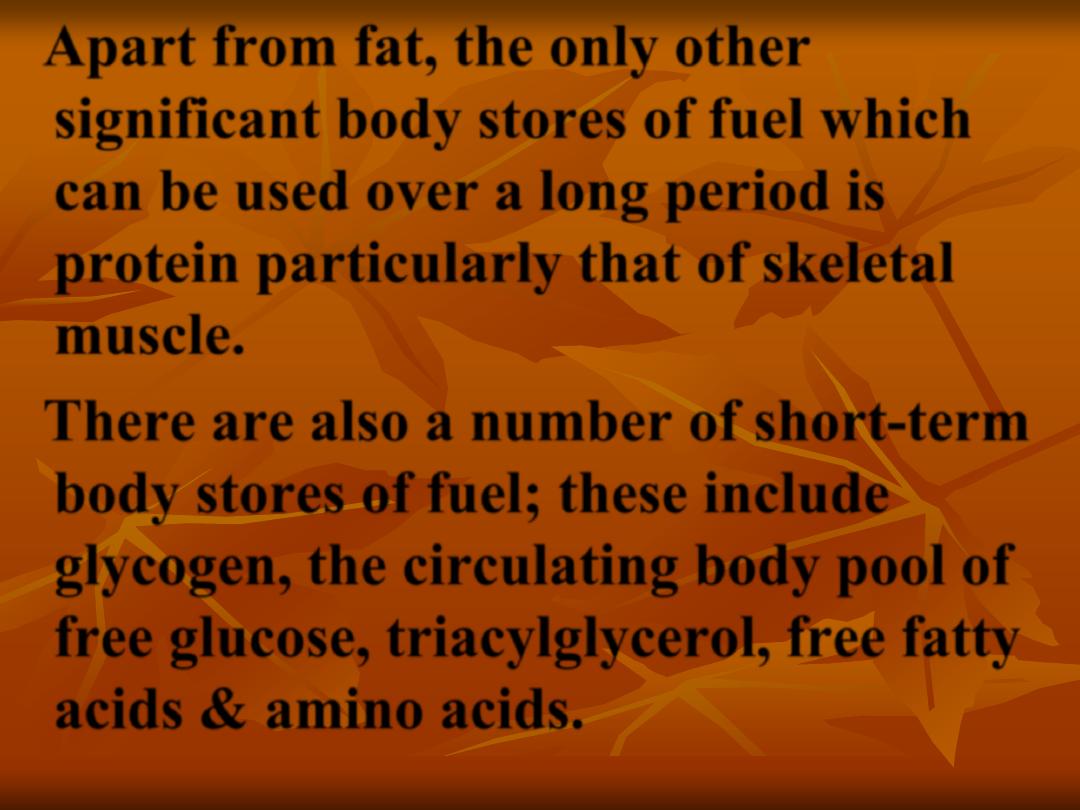
Apart from fat, the only other
significant body stores of fuel which
can be used over a long period is
protein particularly that of skeletal
muscle.
There are also a number of short-term
body stores of fuel; these include
glycogen, the circulating body pool of
free glucose, triacylglycerol, free fatty
acids & amino acids.
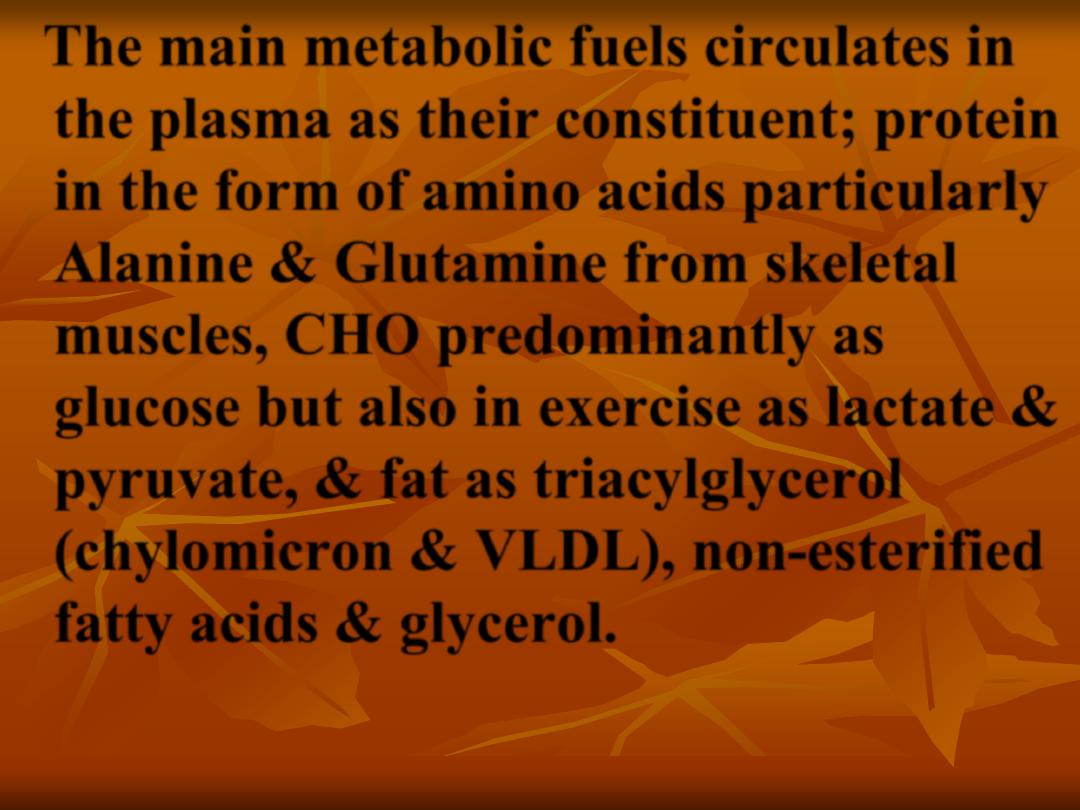
The main metabolic fuels circulates in
the plasma as their constituent; protein
in the form of amino acids particularly
Alanine & Glutamine from skeletal
muscles, CHO predominantly as
glucose but also in exercise as lactate &
pyruvate, & fat as triacylglycerol
(chylomicron & VLDL), non-esterified
fatty acids & glycerol.
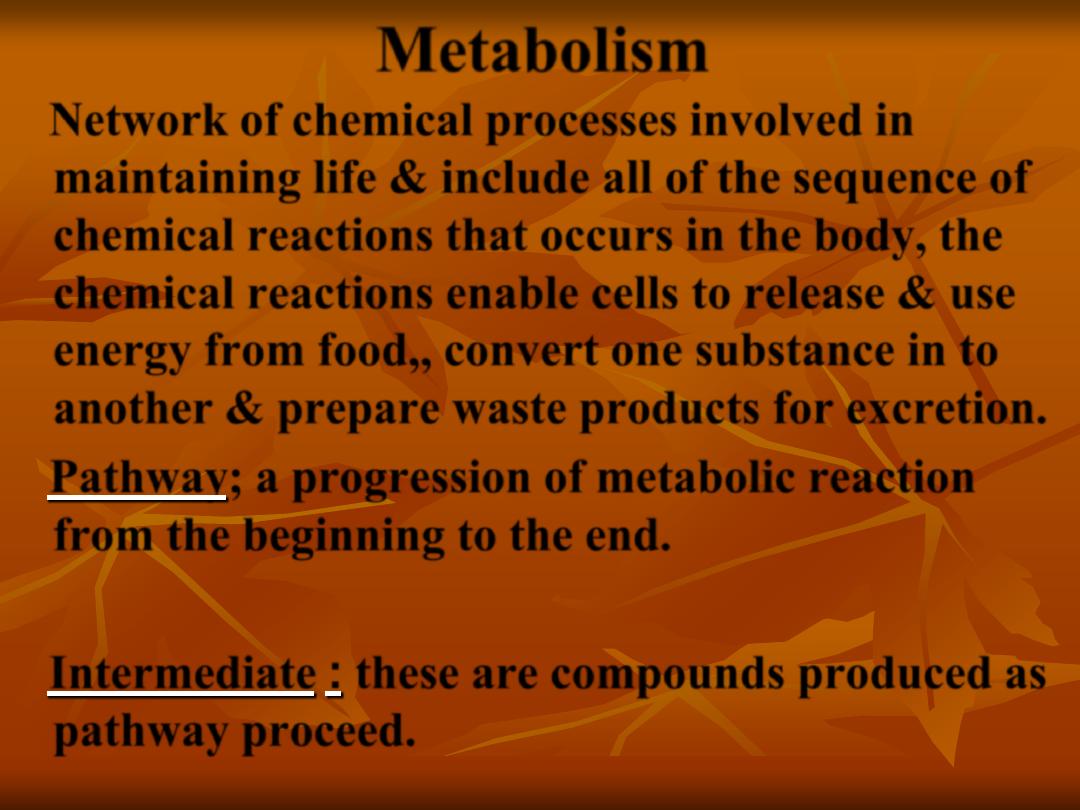
Metabolism
Network of chemical processes involved in
maintaining life & include all of the sequence of
chemical reactions that occurs in the body, the
chemical reactions enable cells to release & use
energy from food,, convert one substance in to
another & prepare waste products for excretion.
Pathway; a progression of metabolic reaction
from the beginning to the end.
Intermediate
: these are compounds produced as
pathway proceed.
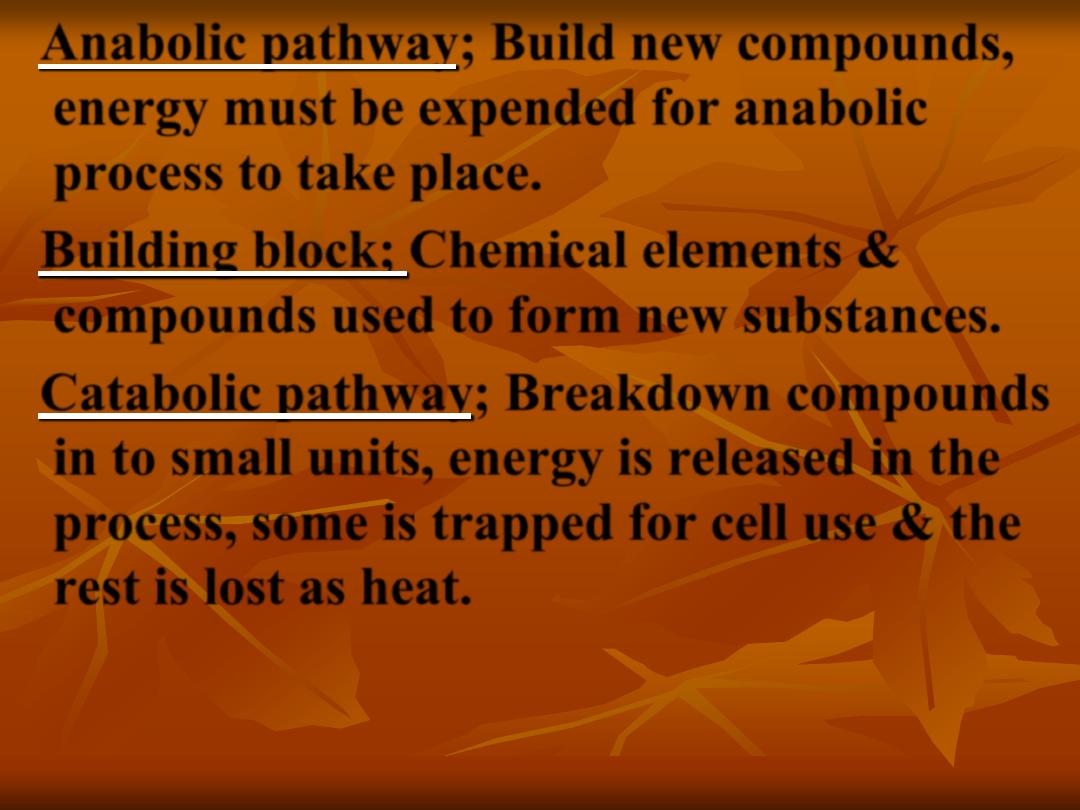
Anabolic pathway; Build new compounds,
energy must be expended for anabolic
process to take place.
Building block; Chemical elements &
compounds used to form new substances.
Catabolic pathway; Breakdown compounds
in to small units, energy is released in the
process, some is trapped for cell use & the
rest is lost as heat.
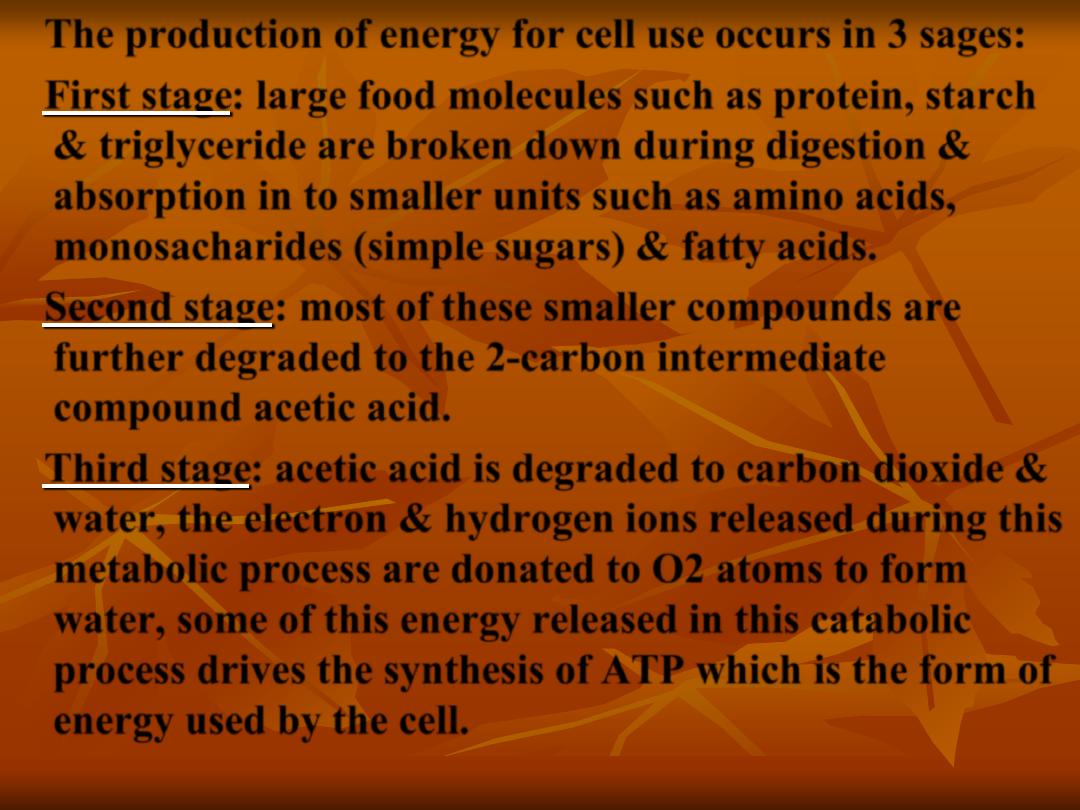
The production of energy for cell use occurs in 3 sages:
First stage: large food molecules such as protein, starch
& triglyceride are broken down during digestion &
absorption in to smaller units such as amino acids,
monosacharides (simple sugars) & fatty acids.
Second stage: most of these smaller compounds are
further degraded to the 2-carbon intermediate
compound acetic acid.
Third stage: acetic acid is degraded to carbon dioxide &
water, the electron & hydrogen ions released during this
metabolic process are donated to O2 atoms to form
water, some of this energy released in this catabolic
process drives the synthesis of ATP which is the form of
energy used by the cell.
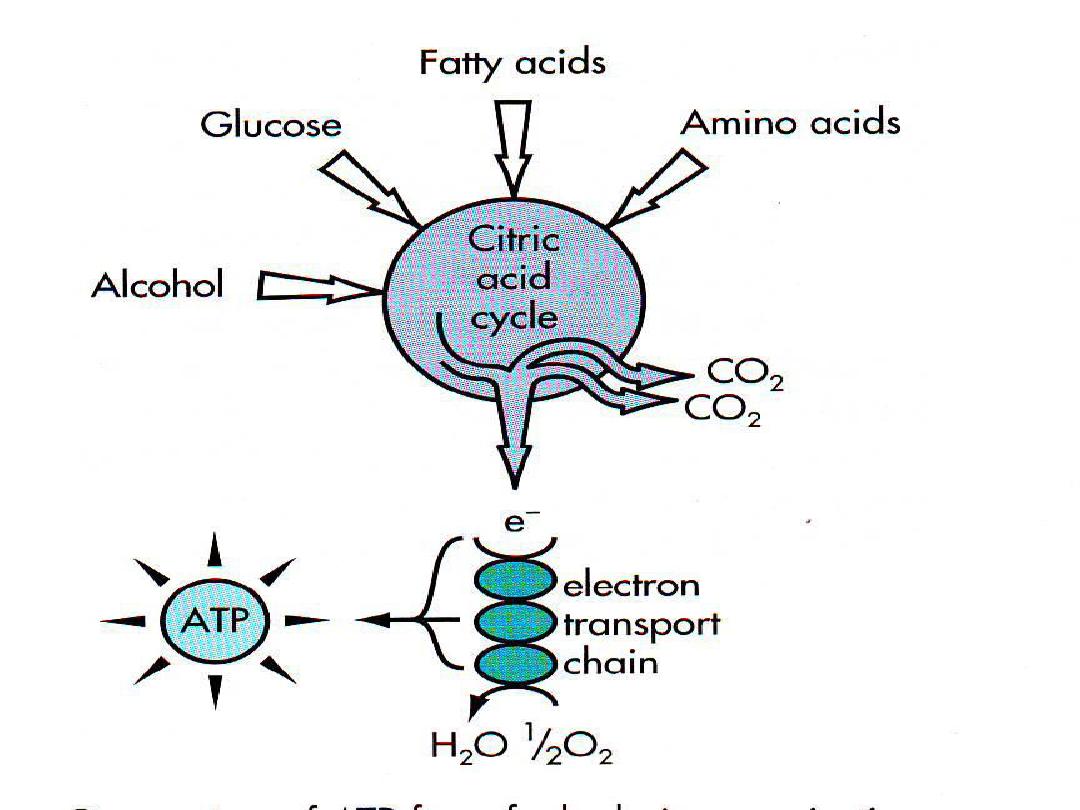
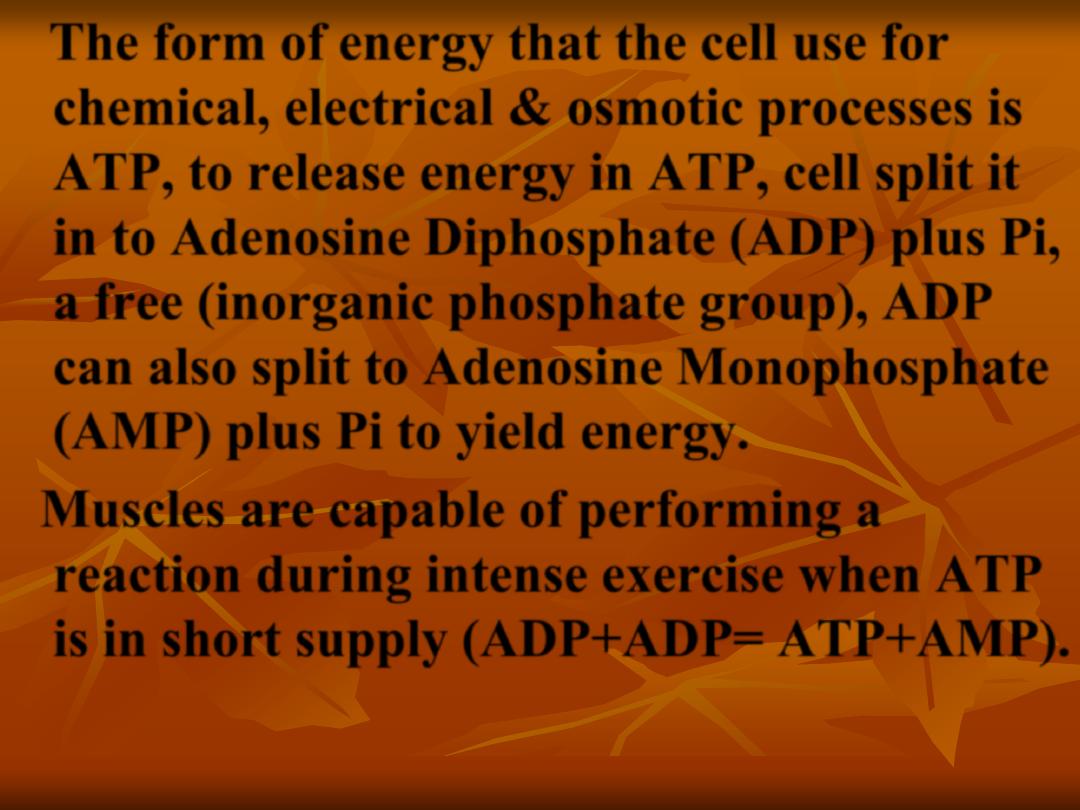
The form of energy that the cell use for
chemical, electrical & osmotic processes is
ATP, to release energy in ATP, cell split it
in to Adenosine Diphosphate (ADP) plus Pi,
a free (inorganic phosphate group), ADP
can also split to Adenosine Monophosphate
(AMP) plus Pi to yield energy.
Muscles are capable of performing a
reaction during intense exercise when ATP
is in short supply (ADP+ADP= ATP+AMP).
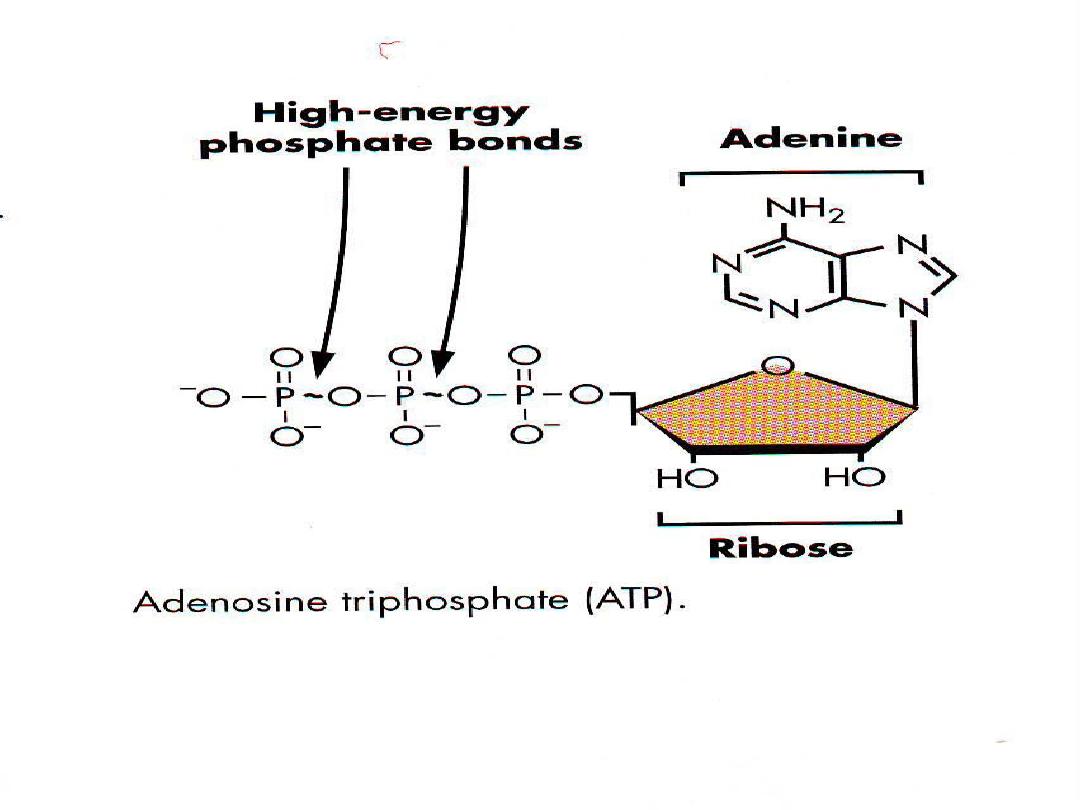
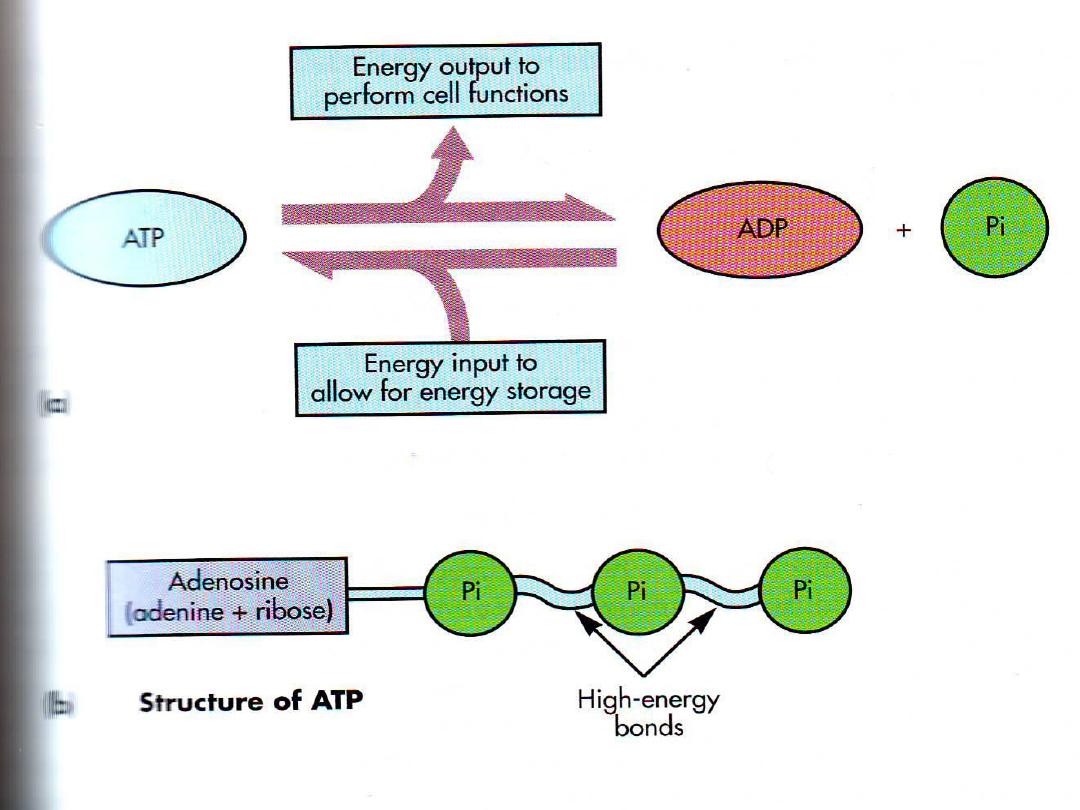
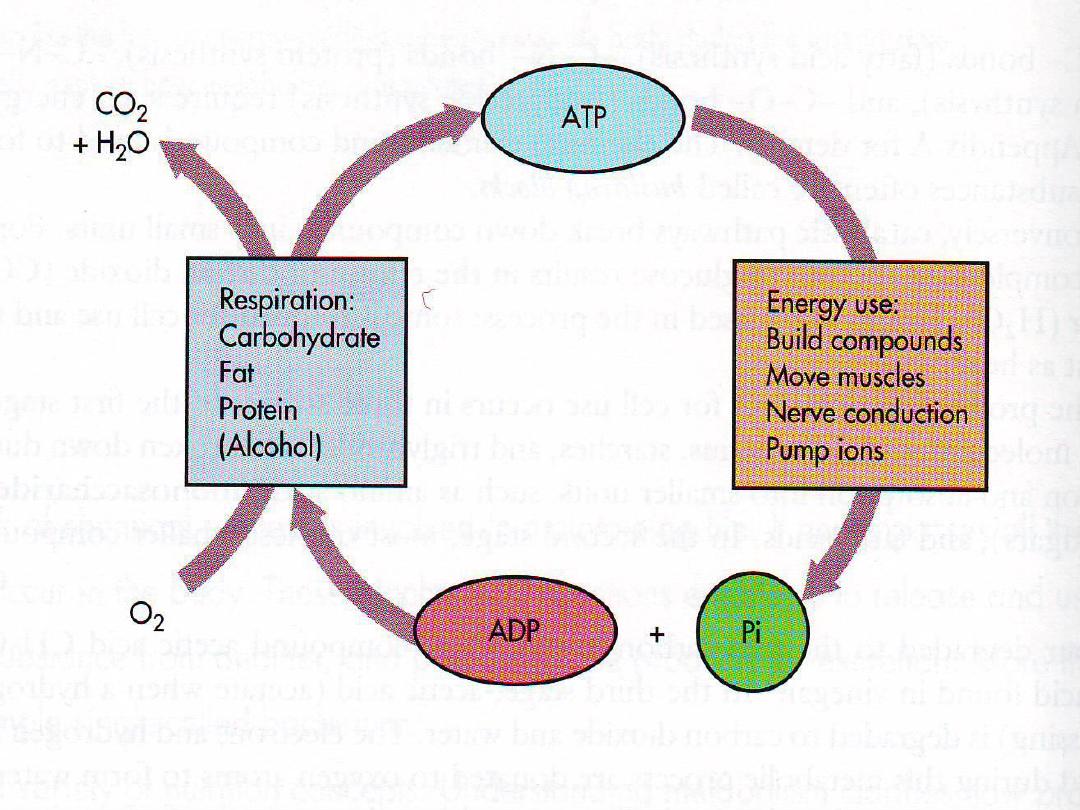
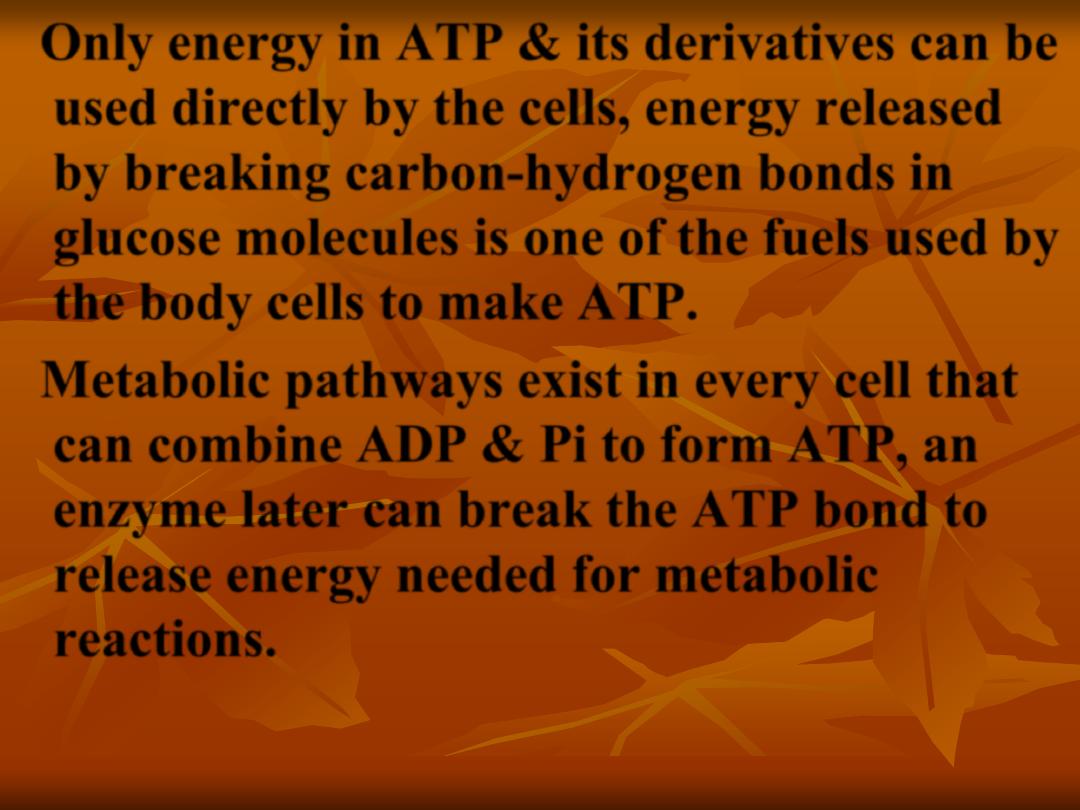
Only energy in ATP & its derivatives can be
used directly by the cells, energy released
by breaking carbon-hydrogen bonds in
glucose molecules is one of the fuels used by
the body cells to make ATP.
Metabolic pathways exist in every cell that
can combine ADP & Pi to form ATP, an
enzyme later can break the ATP bond to
release energy needed for metabolic
reactions.
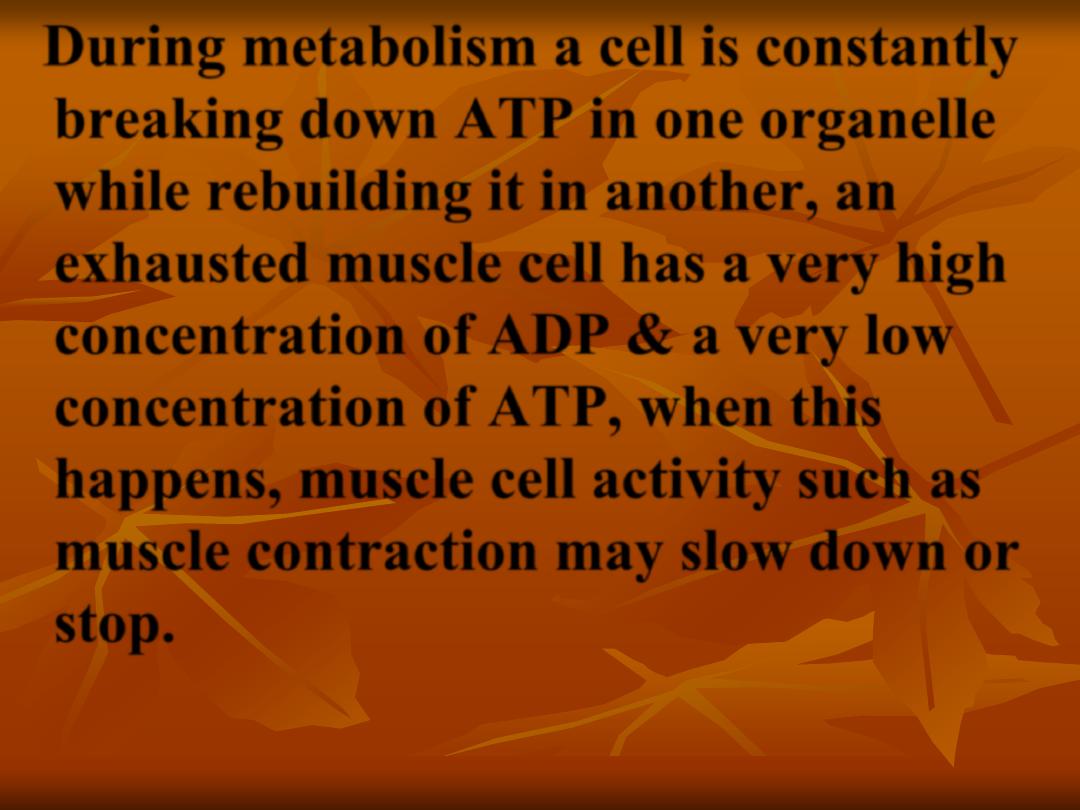
During metabolism a cell is constantly
breaking down ATP in one organelle
while rebuilding it in another, an
exhausted muscle cell has a very high
concentration of ADP & a very low
concentration of ATP, when this
happens, muscle cell activity such as
muscle contraction may slow down or
stop.
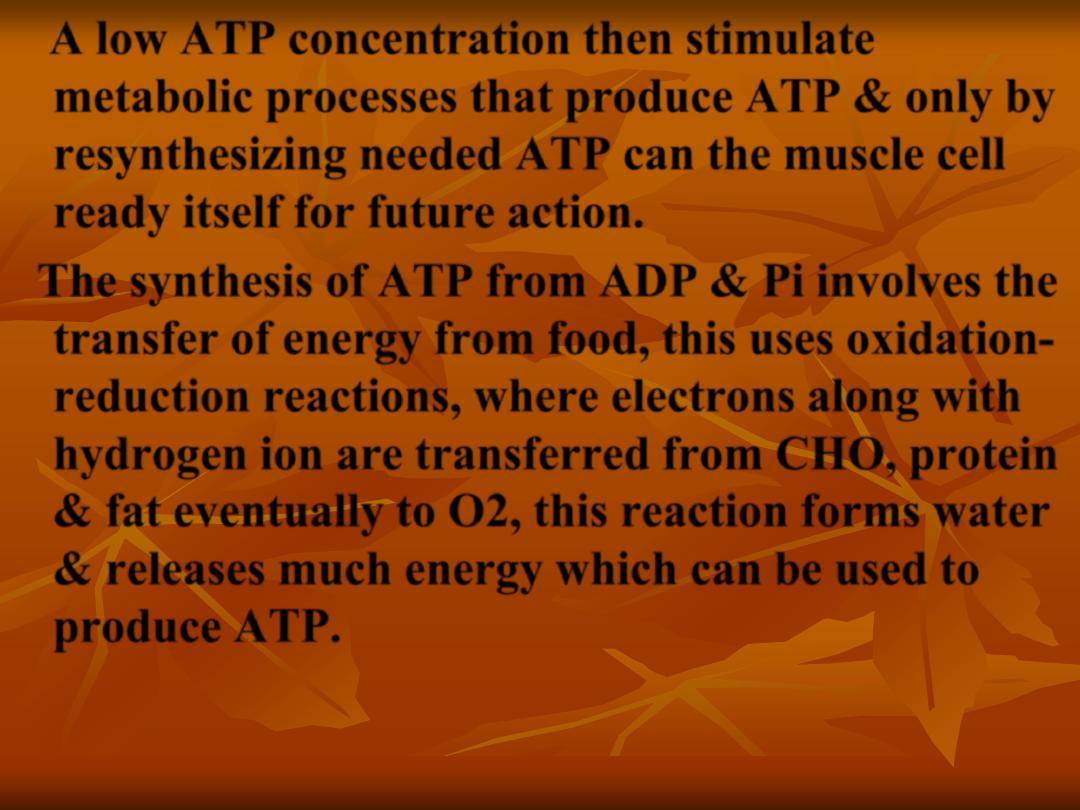
A low ATP concentration then stimulate
metabolic processes that produce ATP & only by
resynthesizing needed ATP can the muscle cell
ready itself for future action.
The synthesis of ATP from ADP & Pi involves the
transfer of energy from food, this uses oxidation-
reduction reactions, where electrons along with
hydrogen ion are transferred from CHO, protein
& fat eventually to O2, this reaction forms water
& releases much energy which can be used to
produce ATP.
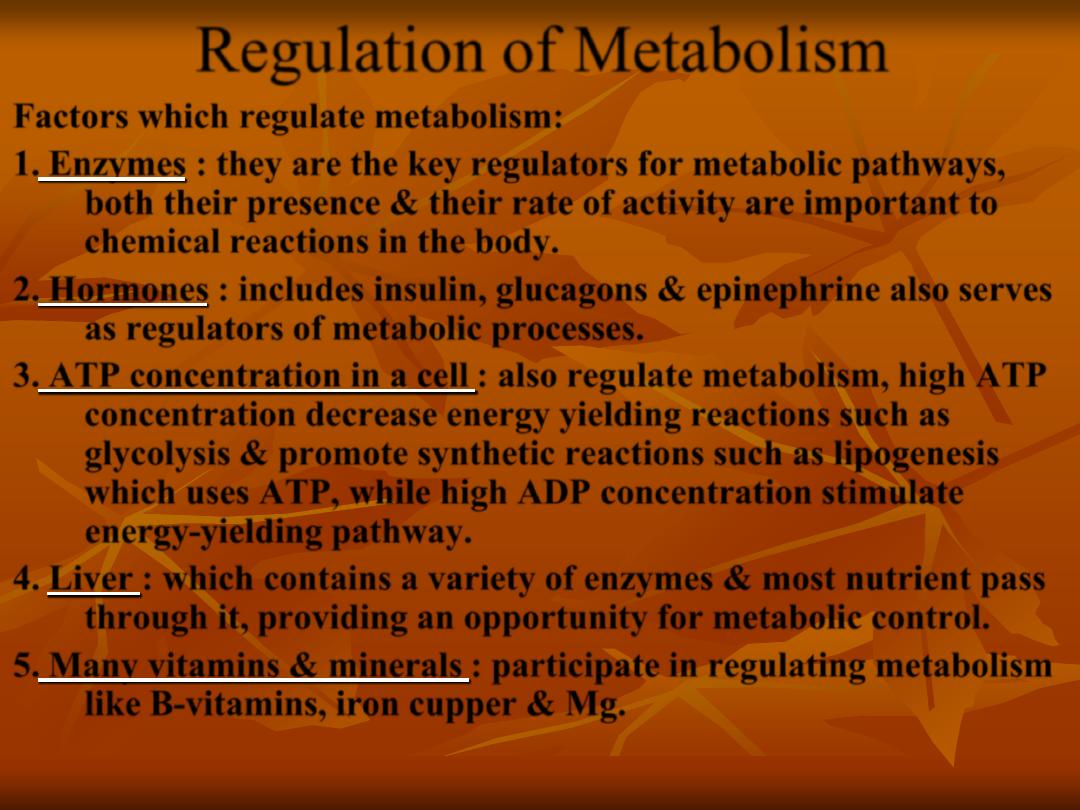
Regulation of Metabolism
Factors which regulate metabolism:
1. Enzymes : they are the key regulators for metabolic pathways,
both their presence & their rate of activity are important to
chemical reactions in the body.
2. Hormones : includes insulin, glucagons & epinephrine also serves
as regulators of metabolic processes.
3. ATP concentration in a cell : also regulate metabolism, high ATP
concentration decrease energy yielding reactions such as
glycolysis & promote synthetic reactions such as lipogenesis
which uses ATP, while high ADP concentration stimulate
energy-yielding pathway.
4. Liver : which contains a variety of enzymes & most nutrient pass
through it, providing an opportunity for metabolic control.
5. Many vitamins & minerals : participate in regulating metabolism
like B-vitamins, iron cupper & Mg.
